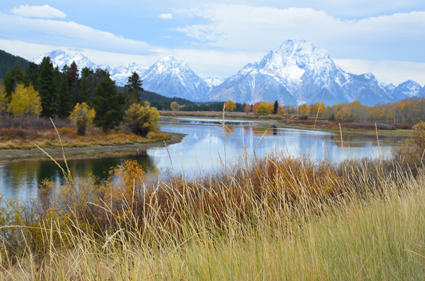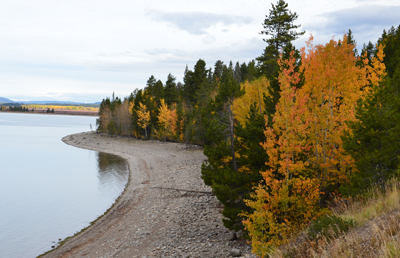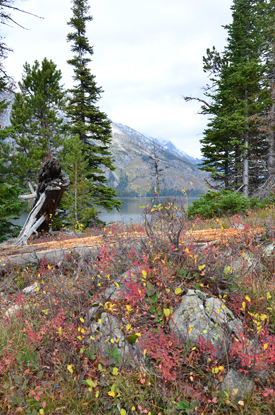
Colors along U.S. 89 rival New England
For someone from Miami, where fall rarely happens except on television or on a movie screen, it was a truly golden opportunity.
 Driving along U.S. 89 from Logan, Utah, to Jackson Hole, Wyo., and nearby Grand Teton National Park, we experienced fall in the mountains … in full color. It was the Rockies in their most electric form.
Driving along U.S. 89 from Logan, Utah, to Jackson Hole, Wyo., and nearby Grand Teton National Park, we experienced fall in the mountains … in full color. It was the Rockies in their most electric form.
While New England gets all the media hype about its leaf peepers and the amazing colors of fall in Massachusetts, Vermont, New Hampshire, and Maine, the north-south corridor running from Salt Lake City north into Grand Teton and Yellowstone in northwestern Wyoming seemingly is overlooked.
But for me, at least, the chance to drive the five hours along U.S. 89 was ample evidence that the mountain fall season is equal to, if not better, those fall experiences of the northeast.

Our group of writers saw some of the richest colors any designer or artist could imagine.
We saw Mother Nature’s best colors on canyon walls, mountainsides, river banks, lakefronts, and even on the countless ranches that covered the three states that Route 89 covers— Utah, Idaho, and Wyoming— on this trip.
It is difficult to imagine adjectives and nouns that do justice for the many colors we viewed.
There were dozens of variations of reds, greens, golds, yellows, browns, blues, and oranges.
The northbound drive from Utah into Idaho and Wyoming passes through an impressive list of undeveloped areas — they are national forests— before entering the two famous national parks. We had the benefit of a clear afternoon for driving north and the bright afternoon sun made the scenery seem even more intense.
Once we left the Salt Lake City area and made it into the smaller university community of Logan, the real fall color experience began. We definitely were not among the palms of Miami any more.
 As it was mid October for our trip, and colors were peaking as we entered the Cache National Forest. Logan Canyon was stunning on both sides of the winding road as it followed the Logan River.
As it was mid October for our trip, and colors were peaking as we entered the Cache National Forest. Logan Canyon was stunning on both sides of the winding road as it followed the Logan River.
With people horseback riding, kayaking, hiking, and climbing, it was an active place. The section of about 40 miles from Logan to Garden City had magnificent photo opportunities on each turn. Next, Bear Lake was awash in its own palette of oranges and reds, especially.
As we went further north, the route next passes through Caribou National Forest. Then more bright colors greeted us in Bridger National Forest.
Targhee National Forest, which came next, continued the visual treats before we entered Teton National Forest to the south of the national park around Jackson Hole. Much of the route follows rivers through canyons.
After the Logan River, we followed the Snake River into Jackson Hole, our home for three nights and days.
North of Jackson Hole, U.S. 89 and its geography ratchet up the experience even further. The road runs to the east of the long and tall range of the Grand Teton mountains (upwards of 13,770 feet) and the surrounding river and lake landscapes as it enters Grand Teton National Park.
While there are numerous turnouts allowing visitors to stop and admire the view, the area was nothing less than one calendar image after another.
At the north end of the park, the road becomes the John D. Rockefeller Memorial Parkway, another national park unit, and connects Grand Teton National Park to Yellowstone National Park for even more fall color.
It was a drive producing one visual surprise after another. Lucky for us, we followed the same route south at the end of our reporting trip and got to see the same scenery, this time in sharp, bright morning light.
For us, it was a trip well worth the time and effort.
Bruce Garrison
University of Miami

Comments are Closed